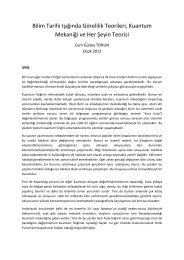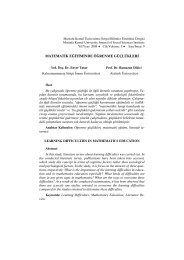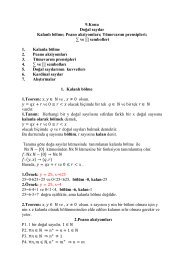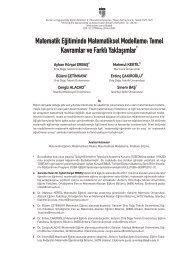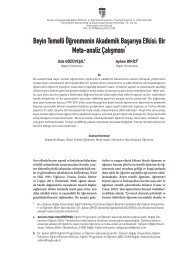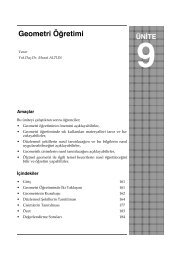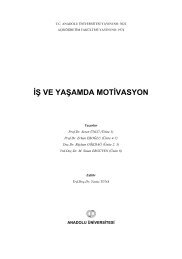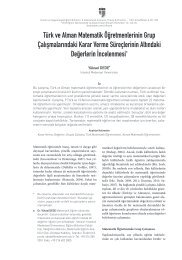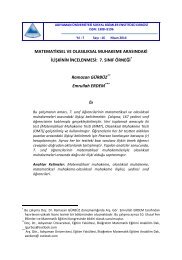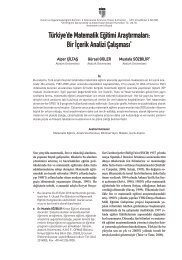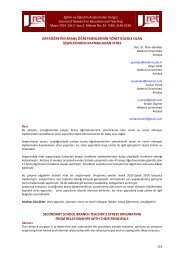Ufuk-U_niversitesi-SBE-Dergisi-S-ayı-5-kopya
Ufuk-U_niversitesi-SBE-Dergisi-S-ayı-5-kopya
Ufuk-U_niversitesi-SBE-Dergisi-S-ayı-5-kopya
Create successful ePaper yourself
Turn your PDF publications into a flip-book with our unique Google optimized e-Paper software.
The participants were taught by 4 different instructors, 2 having the same nativelanguage as the participants (Turkish) and 2 being native speakers of Spanish with noknowledge of the participants’ native language. 34 participants (48.6%) were taught by one ofthe Turkish instructors, while 36 participants (51.4%) were taught by the Spanish instructors.The Turkish instructors had a teaching experience of 2 years and the Spanish instructors cameto Turkey with a staff exchange program for two semesters.2.2 InstrumentsThe instruments of the study consisted of a consent form, demographic informationform, an English proficiency test and the Strategy Inventory of Language Learning (SILL)designed by Oxford (1990).Demographic Information Form:All participants filled out a form about their age, gender, class, first, second, third andfourth language and the years they spent on learning them.English Proficiency Test:The English Proficiency test was designed as a combination of items from theCambridge (2009) and Oxford (2011) placement test. The number of items was decreasedfrom 33 to 25 after piloting the study. So as to evaluate participants’ proficiency fromdifferent perspectives, different test types were included to assess different skills; therefore, asentence completion, cloze and a comprehension test were included. This test was used toensure that all the participants were in almost the same level.Strategy Inventory of Language Learning:The Turkish version of Oxford’s (1990) inventory which was translated by Demirel(2009) was used to analyze the language learning strategies of the participants. The reason forusing a translated version is the low proficiency of the participants and the concern ofmisunderstanding. The instrument consists of 50 items designed as a five-point Likert scale.The items are grouped into two main categories of strategies: direct and indirect strategies.These categories are further divided into three subcategories each. The direct strategiesinclude memory, cognitive and compensation strategies; whereas the indirect strategiescomprises of metacognitive, affective and social strategies. In sum, the instrument has an65





